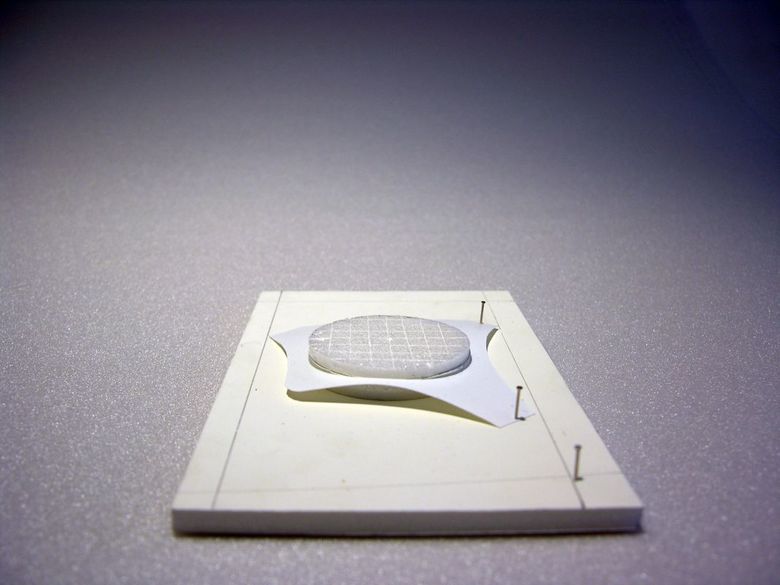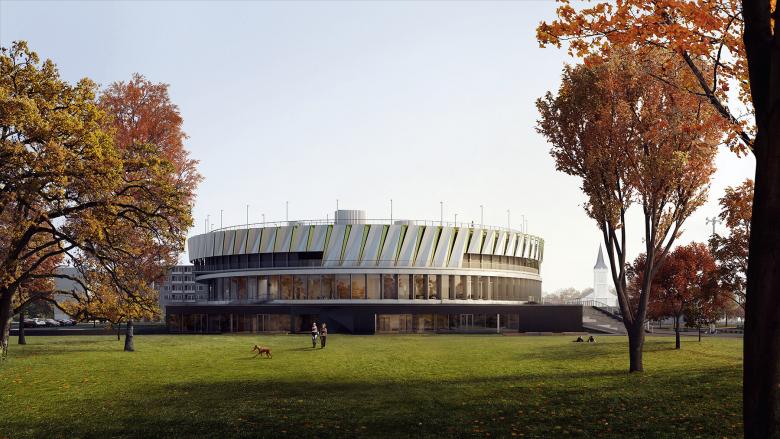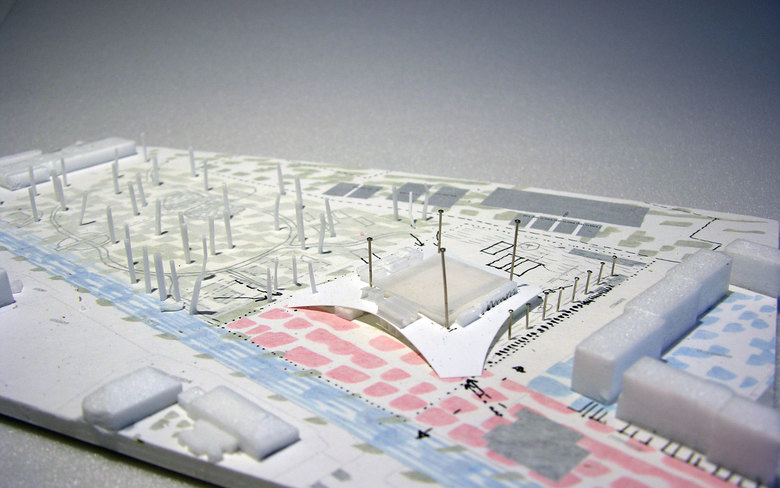MFCS Community Centre
Budapest, Hongrie
This multi-functional building in Rákosmente, one of the agglomeration districts of Budapest serves the sporting and recreational needs of the local community but can also be used as a venue of national and international cultural and sporting events. The primary objective was to create a convenient and appealing community centre that can also be put to everyday use by the various generations of the district with a population of approximately 10,000.
On each side, the site adjoins urban zones of varying character. From the East it borders on the nature reserve of Rákos-patak (Rákos Creek) and a bicycle track, from the South on high-rise concrete apartment blocks, from the West on Pesti út, a main road with heavy traffic, while from the North on Népkert, a two hundred-year-old public park. Our concept focused on exploiting and strengthening the connections of our building and its highly varied urban environment. To this end, the building was set in an open, directly and freely accessible public space with direct connection to both the streets and the neighbouring park.
The structure houses a 1500-seat sports arena, dance halls, a fitness and wellness parlour, squash-fields, a restaurant, a bowling alley and offices. On the roof there is a public open area and a roof garden complete with an open-air running track. The various functions and features can be operated and used independently in time and space.
The project has a low energy profile and exploits modern, sustainable technologies. The HVAC systems comprise geothermic heat pumps and probes, and the interior of the sports arena has natural daylight illumination.
- Architectes
- T2.a Architects
- Année
- 2017
- Client
- Municipality of Budapest-Rákosmente XVII. district
- Plot area
- 19.500 m2
- Number of floors
- groundfloor + 2 levels
- Architecture
- T2.a Architects Ltd. / www.t2a.hu
- Architect
- Bence Turányi
- Project team
- Dénes Regőczi, Gábor Balla
- Fellow-architects
- Mátyás Papp, Renáta Gyurcsó, Laczkó-Pető Bálint
- Construction design
- Ákos Pohl, Tamás Futó (CEOS Ltd.)
- Plumbing & HVAC
- László Temesvári, József Nagy, Tamás Szőnyi (Temesvári Tervező Ltd.)
- Electrical planning
- Ferenc Kelemen, Enikő Tóth (Kelevill Ltd.)
Projets liés
Magazine
-
-
Building of the Week
A Loop for the Arts: The Xiao Feng Art Museum in Hangzhou
Eduard Kögel, ZAO / Zhang Ke Architecture Office | 15.12.2025 -










